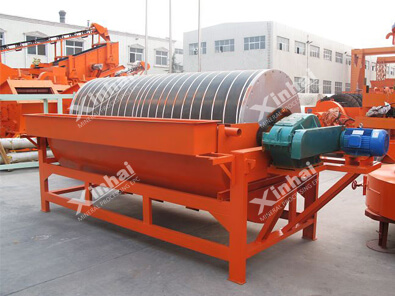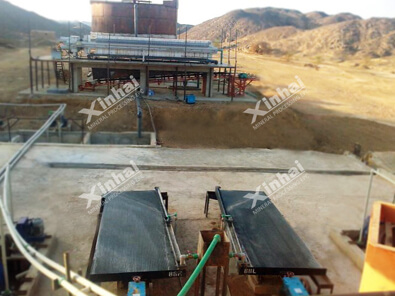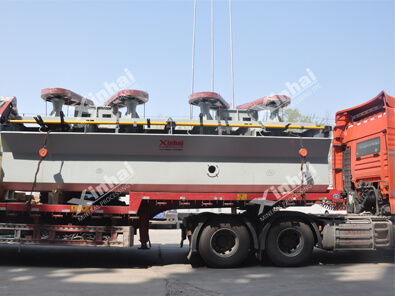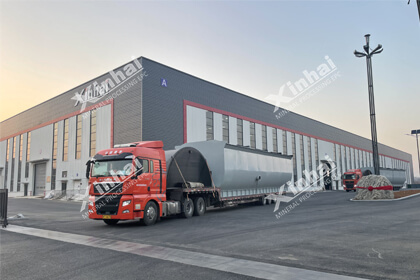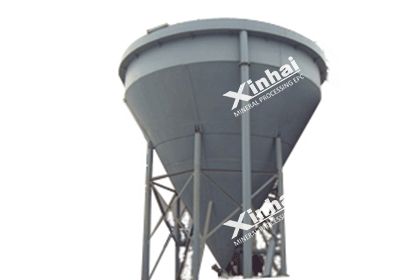The Ultimate Guide of Titanium Benefication
 Essow
Essow
 Oct 29, 2022
Oct 29, 2022
 762
762
If you want to know more details about equipment, solutions, etc, please click the button below for free consultation, or leave your requirements!
Titanium is one of the most widely distributed and abundant elements in the earth's crust, and its resources are the fourth only after iron, aluminum, and magnesium. Titanium and its oxides and alloy products are important coatings, new structural materials, and anti-corrosion materials, which are widely used.
The methods and technological processes used in titanium ore beneficiation depend on factors such as deposit type, ore properties and mineral composition.
In view of the ore properties of primary titanium ore (vein ore) are relatively similar and the types of target minerals are relatively simple, the beneficiation methods and technological processes adopted are common. Titanium and zirconium minerals in titanium placer deposits are mostly symbiotic with monazite, xenotime, cassiterite and precious metals, and must be separated in the process flow.
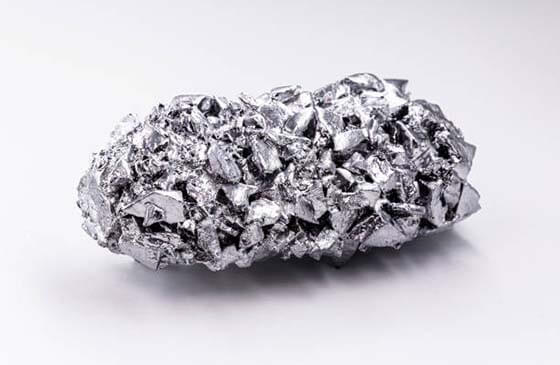
(Titanium Alloy)
01 The Beneficiation of Titanium Primary Ore (Vein ore)
BackThe titanium primary ore (vein ore) used in industry is all titanium-containing composite iron ore. The beneficiation process is divided into three stages: pre-selection, iron beneficiation and titanium beneficiation. The titanium beneficiation part can be divided into two stages: roughing and concentrating.
1. Pre-Beneficiation of Titanium Primary Ore
When some titanium vein ore is crushed to a certain degree of coarse grain state, there is a considerable amount of vein minerals could reach the basic monomer dissociation. These coarse grain monomer vein minerals will be discarded by the pre-beneficiation operation to increase the processing capacity and improve the feed grade.
The pre-beneficiation operation can be set in the crushing process. The pre-beneficiation method is usually magnetic separation and gravity separation.
If you want to know more about Magnetic Sepration, please click the link to see details.
2. Iron Separation from Titanium Primary Ore
The main purpose of using titanium-containing composite iron ore in the industry is to obtain iron concentrate and vanadium iron concentrate.
A simple and effective magnetic separation method can be used to separate iron. The ore is crushed (or pre-separated) and ground to achieve an optional monomer dissociation degree. A drum or belt weak magnetic field wet magnetic separator can be used to separate iron and get iron concentrate or vanadium iron concentrate, magnetic separation tailings are the raw materials for comprehensive recovery of titanium.
In some ores, iron and titanium minerals are densely embedded, and it is difficult to obtain a separate concentrate by a beneficiation method, so only the tailings are discarded through gravity separation. The obtained iron-titanium mixed concentrate can be directly roasted or smelted to produce high-purity pig iron and titanium slag.
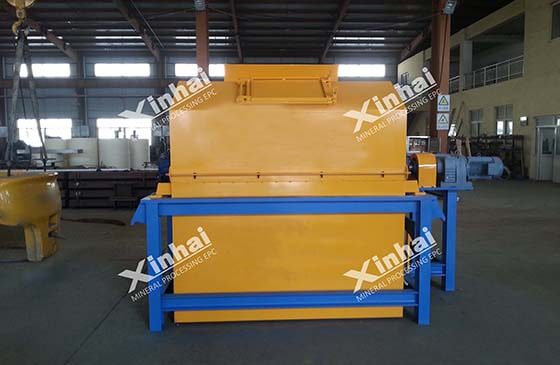
(Magnetic Separator for Titanium Processing)
3. Titanium Separation from Titanium Primary Ore
The recovery of titanium in titanium vein ore is carried out in iron beneficiation tailings. Titanium separation methods include gravity separation, magnetic separation, electrical separation and flotation. The industrial beneficiation process is as follows:
1. Gravity Separation-Electric Separation Process
Gravity separation is for roughing and electric selection for concentrating. The gravity separation equipment is mainly spiral concentrator (including spiral chute) and shaking table. Gravity roughing is to discard low-density gangue minerals or waste rock to obtain rough concentrate for concentrating.
Electric Separation Method: The purpose of concentrating is to obtain the final concentrate. For sulfur-containing ores, there is often an auxiliary flotation process to remove sulfide minerals between roughing and concentrating processes.
2. Gravity Separation - Magnetic Separation - Flotation Process
This process is grading, coarse-grained gravity separation, magnetic separation and fine-grained flotation of raw ore. The gravity separation equipment is a shaking table, and the magnetic separation is a dry magnetic separator. The flotation particle size is -0.074mm. The flotation reagents include MOS-II, oxide stone, wax soap, sulfuric acid, sodium fluoride, oleic acid, diesel oil and pine oil.
3. Single Flotation Process
Flotation method is an effective beneficiation method for the separation of fine-grained inlaid titanium vein ore. The single flotation process is simple, and the operation and management are convenient, but the use of chemicals increases the cost, and the discharge of tailings has environmental protection problems. At present, it is not widely used in industry. The currently used flotation reagents include sulfuric acid, Tal oil, diesel oil and emulsifier Etoxolp-19.
02 The Beneficiation of Titanium Zirconium Placer
BackThe main types of titanium-zirconium placer deposits are coastal placers, followed by inland placers. Titanium zirconium placer is formed by weathering, crushing and enrichment of primary ore under natural conditions. It has the advantages of easy mining and beneficiation, low production cost, good product quality, many types of associated minerals, and high comprehensive recovery value. Titanium-zirconium placer is the main source of minerals such as ilmenite, rutile, zircon and monazite in the world.
1. Mining of Titanium Placer
Titanium and zirconium placer deposits generally can be mined by dry mining or ship mining machinery without stripping, except for a few ore bodies with overburden on the upper part that needs to be stripped.
Dry mining machinery includes: bulldozers, scrapers, loaders and bucket wheel excavators.
Mining ships includes: chain bucket type, stirring suction type and bucket wheel type.
The mined ore is transported to the roughing plant by belt conveyor or sand pump pipeline. Titanium placer beneficiation has two stages: roughing and concentrating.
2. Roughing of Titanium Placer
The raw ore of the roughing plant first goes through de-slagging, screening, classification, desliming and concentration, and then enters the roughing process for separation.
The purpose of roughing is to provide rough concentrate to the beneficiation plant. The selected ore adopts gravity separation method to discard low-density gangue mineral tailings according to the mineral density, and obtain a heavy mineral mixed concentrate with a heavy mineral content of about 90%.
The roughing plant is generally integrated with the mining operation to form a mining and dressing plant. In order to adapt to the characteristics of placer deposits, roughing plants are generally built as mobile. The moving methods include floating boats on water, land tracks, crawler tracks, pallets and regular demolition and relocation.
Titanium sand ore roughing generally uses equipment with large processing capacity, high recovery rate, and easy application in mobile dressing plants.
Most use cone concentrators and spiral concentrators, some use shaking tables. The above equipment can be used alone or in combination.
A single cone concentrator is mainly used for roughing plants with large scale or high content of heavy minerals in raw ore; most plants use conical concentrators for roughing and spiral concentrators for concentrating; some smaller concentrators often use spiral concentrators for roughing.
3. Concentrating of Titanium Placer
Titanium placer is mostly a comprehensive ore containing several valuable minerals. The purpose of concentrating is to effectively separate and purify the minerals with recovery value in the rough concentrate, so as to meet the respective quality requirements of the concentrate and make it a commodity concentrate.
Concentrating plants are generally built as stationary. The rough concentrate is transported to the concentrating plant by truck or train or pipeline. Concentrating operations are divided into wet separation and dry separation, with dry separation being the main one. Wet process is usually used in the first stage of the beneficiation process.
Sometimes in the concentrating process, there are alternate operations of dry separation and wet separation. Considering energy consumption and simplifying the process flow, this process should be minimized.
Wet Concentrating
The types of wet beneficiation operation in the concentrating plant include:
1. Use gravity separation by shaking table or spiral concentrator, and further discarding the gangue minerals with low density remaining in the rough concentrate. For coarse concentrate containing salt, it also has the effect of cleaning salt.
2. Use mnetic separation method to pre-separate some easy-to-separate titanium concentrates to reduce the amount of ore in dry separation.
3. Add sodium hydroxide, hydrochloric acid, dilute hydrofluoric acid, sodium metabisulfite and other reagents to the coarse concentrate for high concentration mixing to remove mineral contamination and improve the effect of concentrate.
4. Adopt flotation method to separate zircon and monazite products.
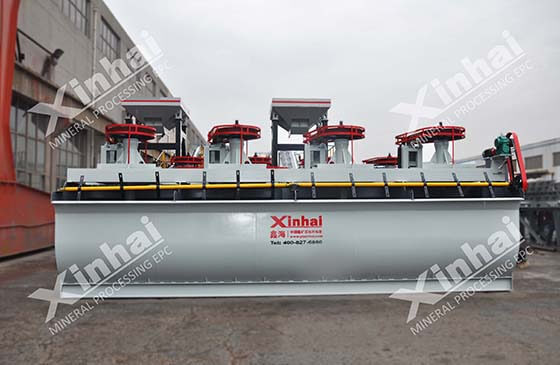
(Flotation Machine for Titanium Processing)
Dry Concentrating
Dry concentrating is based on the differences in magnetic separation, electrical conductivity and density among the minerals in the product. Depending on the composition and properties of the rough concentrate, the structure of the dry separation process varies greatly.
For coarse concentrates with complex mineral composition and many types of minerals, the dry separation process is more complicated, with many operations and changes in process structure; for coarse concentrates with simple mineral compositions, the dry separation process is very simple.
Magnetic separation is to use magnetic separators of different types and field strengths to compare minerals with different magnetic susceptibility. In the dry separation process, weak magnetic separation is usually used to separate magnetite, a strong magnetic mineral, and then medium magnetic separation is used to separate most of the ilmenites with strong magnetic properties and easy separation. Strong magnetic separation is used to separate some weakly magnetic minerals like ilmenite and monazite from non-magnetic minerals zircon and white titanium.
Electric separation is the separation of various minerals in the rough concentrate based on the difference in electrical conductivity. Electric separation is often used in the separation of conductor and non-conductor minerals in the process of rough concentrate dry separation. Electric separation is effective in the separation of rutile and zircon, and concentrating of refractory ilmenite, zircon, monazite and other minerals.
In production, we can change magnetic field and electric field strength to alternately perform electrical and magnetic separation operations to improve the separation effect.
In the process of dry beneficiation, some minerals that have been magnetically or electrically separated are simultaneously enriched due to their similar electrical and magnetic properties. When there is an optional density difference between the various minerals being separated, gravity separation is usually adopted. In order to reduce the operation of alternating dry and wet beneficiation, the gravity separation of these products adopts dry gravity separation (wind shaking table). The final concentrating of zircon, monazite, altered ilmenite, etc., often uses a wind shaking table.
03To Wrap Up
BackThe above are the titanium beneficiation processes. In actual production, the most suitable process and equipment should be selected according to the composition, nature, and occurrence of useful components of the ore itself.
If you have titanium ore for beneficiation, we can provide you with process design and equipment. Welcome to leave a message on our website, or consult online customer service.
 +86 183 3575 8886
+86 183 3575 8886 pinklaurabao@gmail.com
pinklaurabao@gmail.com




 Message
Message Chat Now
Chat Now


